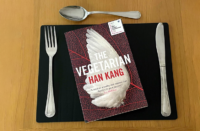Europe in the mid-19th century experienced widespread political upheaval. The Revolutions of 1848, which swept across France, Germany, Austria, Hungary, and Italy, demanded political reform and national self-determination. While most of these revolts failed in the short term, they exposed tensions between conservative monarchies and the bourgeoisie, who pushed for nation-states and sovereignty. The Italian Risorgimento, led by figures like Garibaldi, aimed to unify Italy, which, along with Germany, achieved unification by 1871. The era also saw the rise of the working-class movement, including the British Chartists and the Paris Commune of 1871, reshaping European politics.
Antonio Gramsci later argued that the Risorgimento had been co-opted by elites, who unified Italy in a way that preserved existing power structures, leaving little benefit for the impoverished, especially in southern Italy. Giacomo Puccini’s operas reflect these societal conditions, portraying the struggles of ordinary people with emotional depth and realism.
In the late 19th century, realism and naturalism in literature and art, led by figures like Émile Zola and Gustave Courbet, influenced the verismo style of Italian opera, which focused on everyday struggles with often tragic endings. Although Puccini is not strictly a verismo composer, he absorbed its influence, particularly in his portrayal of the emotional lives of ordinary people. His operas often critique societal conditions and reflect the challenges faced by marginalised or oppressed characters.
Born in 1858 in Lucca, Tuscany, Puccini grew up during the rise of nationalist sentiment. His family had a modest background as church musicians, and the economic struggles of post-unification Italy shaped his early life. When he moved to Milan to study music, Puccini relied on scholarships and patrons to support himself. Milan, an industrial hub, was home to socialist and labour movements, which influenced the marginalised characters in his later works, even if Puccini did not engage directly with politics.
While Puccini distanced himself from political activism, his operas still capture the societal struggles of his time. Unlike Giuseppe Verdi, whose career was intertwined with the Italian unification movement and whose operas symbolised resistance to foreign rule, Puccini’s focus was on personal human dramas rather than overt political themes. However, his works often critiqued class structures and power dynamics through the lens of individual experience. Operas like La Bohème and Madame Butterfly explore the lives of the oppressed, while Tosca addresses political repression and tyranny more explicitly.
Verdi’s career had a strong connection to the Risorgimento, with operas like Nabucco becoming symbols of Italian nationalism. The chorus “Va, Pensiero” became an anthem for independence, and Verdi’s name was linked to the unification movement (“Viva Verdi” stood for “Viva Vittorio Emanuele Re D’Italia”). Verdi’s revolutionary spirit reshaped opera, moving away from conventional structures and infusing it with drama and psychological complexity. By contrast, Puccini, born into a unified Italy, was not politically engaged, but his operas still reflected the social struggles of his time, focusing on characters from various social classes and marginalised groups. While Puccini brought heightened emotional realism to the genre, he did not challenge or transform the art form as radically as Verdi.
At the height of his fame, Puccini received lucrative offers from the United States, where he eventually suffered a creative crisis as he struggled with commercial pressures. He only regained his artistic momentum after returning to Italy. Puccini died in Brussels on 29 November 1924, before completing his final opera, Turandot.
Tosca
Giacomo Puccini’s Tosca (1900) is his most politically charged opera, set in Rome during the Napoleonic Wars. The opera explores themes of resistance against tyranny and political oppression, unfolding against the backdrop of the struggle between republicanism, supported by Napoleon, and monarchical rule upheld by Austria and the Papal States.
The story takes place over a single day in Rom. Mario Cavaradossi, is a painter and supporter of republican ideals. He helps the escaped political prisoner Cesare Angelotti, who is pursued by Scarpia, the ruthless chief of police. The conflict between the republican rebels (Cavaradossi and Angelotti) and the monarchical forces (Scarpia) mirrors the larger political struggles of Puccini’s time.
The libretto, adapted from a drama by Victorien Sardou, is based on historical events surrounding the fall of the short-lived Roman Republic. Puccini’s sympathy for the revolutionaries is clear, especially in Cavaradossi’s defiant cry of “Victory!” upon hearing of Napoleon’s triumph. The opera highlights the emotional intensity of personal and political conflicts, with Puccini’s music amplifying these themes.
While Tosca is influenced by the verismo tradition, focusing on realism and raw emotion, Puccini’s use of leitmotifs, tense harmonies, and orchestration transcends the style, borrowing elements of Wagnerian drama. Scarpia’s character is underscored by ominous, descending chromatic lines, whereas Cavaradossi’s music, with its lyrical and expansive melodies, aligns him with the ideals of liberty and freedom.
Tosca’s character development is central to the opera’s drama. Her famous aria “Vissi d’arte” in act II reflects her anguish, as she questions why she must suffer despite her devotion to art and love. The simplicity of her melody contrasts with the violent world around her, culminating in her decision to kill Scarpia, a symbolic act of resistance against tyranny.
In the final act, Puccini contrasts hope with the brutal realities of political repression. Cavaradossi’s final aria, sung as he awaits execution, reflects the melancholy of fading hopes for freedom, underscoring the personal cost of revolutionary struggles. Through Tosca, Puccini masterfully intertwines personal and political conflict, using music to express themes of oppression and resistance. The opera’s exploration of tyranny, sacrifice, and liberty resonates deeply, reflecting the broader political struggles of Puccini’s Italy and the revolutions that shaped modern Europe.






